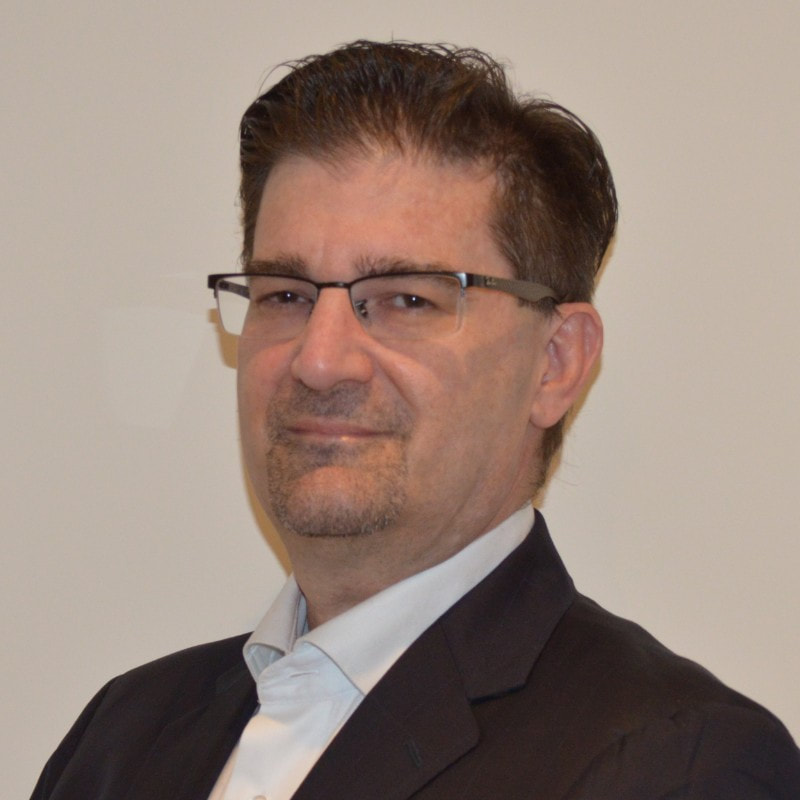CDT Cohort 1 Speakers
|
Cobi Maynard
Integrated photonics is a key technology with wide and diverse applications, both classical and quantum. Being able to make photonic integrated circuits (PICs) from new materials will enable future devices to be have improved functionality and efficiency. I will present simulation results into freestanding triangular cross-section GaN waveguides, with the intended use in electro-optic switching PICs.
|
|
Paradeisa O’Dowd-Phanis
Long-wavelength infrared (LWIR) detectors have many uses, ranging from military to astronomy. They are commonly made of HgCdTe due to its tunable bandgap. However, this material has many drawbacks including cost, issues with uniformity and high levels of dark current. Thus, the past few decades have seen a rise in alternatives, such as type-II superlattice (T2SL). T2SLs boast many advantages, such as easier and cheaper manufacturability as well as Auger recombination suppression. However, their theoretical potential has yet to be achieved. Thus, there is a need to better understand their properties. This can be done by modelling T2SL through the use of Nextnano.
|
|
Bogdan Ratiu
The silicon manufacturing industry has reached impressive milestones during the last few years, both in terms of electrical and optical circuits. However, the Si platform is starting to reach a plateau in terms of miniaturization. Compound semiconductors have shown many favourable optical and electrical properties that can help continue the miniaturization trend. For large scale manufacturing, the most economically efficient method of integrating III-V compounds with Si is done by direct epitaxy. Epitaxial integration poses challenges such as large lattice mismatch, polarity mismatch and thermal expansion coefficient mismatch. We explore two methods of dealing with the defects created by these mismatches: creating defect resistant structures (quantum dots) and creating defect trapping structures (tunnel epitaxy).
Quantum dots (QDs) are nanostructures that confine carriers in all directions. They provide excellent gain material for lasers, having achieved record threshold current, temperature invariance and carrier dynamics. Their resistance to defects makes them ideal candidates for an epitaxially integrated laser. In this talk, I will present the challenges and progress on 1.55 µm C-band QD lasers grown on silicon by metal-organic chemical vapor deposition (MOCVD). The objective of the research is to offer a key optoelectronic component for a range of applications including long distance fibre optics communication, eye-safe LIDAR, and gas and medical sensing. Tunnel epitaxy is an emerging growth technique allowing large-area, defect-free III-V layers on silicon on insulator (SOI) substrates. The challenges of this method include the complex fabrication of the nano-scale three-dimensional growth patterns, precise control of the nano-epitaxy process and diffusion length limitations. In this talk, I will present the concept of tunnel epitaxy as well as our recent progress of GaAs tunnel epitaxy on the buried silicon surface of around one micron length. |
|
Tristan Burman
Semiconductor research often focusses on the newest devices performance and relatively little attention is given to the advance tools and processes that make the work possible. Some of the biggest challenges in compound semiconductors today derive from trying to overcome the manufacturing limitations of our current tools and processes. This talk will discuss the complexities related to InP etching, its current limitations and the potential impact this process will have if it is sufficiently refined.
|
|
Rachel Clark
Quantum light sources are an enabling technology for a vast array of applications, including next generation computing and cryptography, imaging, sensing and light metrology. Particularly for quantum computing, they are a critical “building block” of its development, and efficient, easy-to-manufacture sources are necessary to ensure commercial access and widespread use in societal infrastructure. These sources can exist in a multitude of different physical systems: from nitrogen vacancy centres in diamond, to semiconductor quantum dots, to 2D materials.
A common way to make a like-for-like comparison of the source behaviour, regardless of its physical system, is to measure the second-order correlation-function of light, more commonly known as the autocorrelation function. This function can be determined from “time-stamped” data files recording the arrival time of every photon on each detector which, in principle, includes information on every detection-detection event. I will discuss my work on the development of a code that calculates the function for timestamped data files, and the benefits of this method. I will also introduce the practical complexities involved in measuring and calculating this function, with an overview of the physical significance it can provide. |
Industrial Speakers
|
Dr. Rodney Pelzel
Dr. Rodney Pelzel has over 20 years of experience in the semiconductor industry, with deep expertise in semiconductor materials engineering and the epitaxial growth of compound semiconductors. Dr. Pelzel joined IQE as a Production Engineer in 2000. For the first twelve years of his career with IQE, Dr. Pelzel held various engineering and operational management roles focusing on scaling leading edge epitaxial technology for volume manufacturing for wireless applications. In 2012, Dr. Pelzel was appointed as the head of R&D for the IQE Group and was tasked with creating unique materials solutions that enable IQE’s customers and provide them with a competitive edge. Throughout his career, Dr. Pelzel has been involved in numerous new product introductions, the most recent being IQE’s highly successful launch of 6” VCSELs for consumer applications. Dr. Pelzel is a chemical engineer by training, holding a BS (High Distinction) from the University of Colorado (1995) and a PhD from the University of California, Santa Barbara (2000). He is a Chartered Engineer and a Chartered Scientist, and a Fellow of the Institution of Chemical Engineers. Dr. Pelzel’s work has been widely published and he is the co-inventor of 30+ patents.
|







